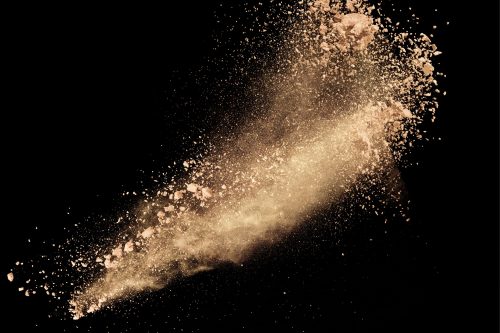What is surface finishing?
A surface finish is defined as the process that alters the surface of a product to achieve a certain property. The surface finish is the last step in the manufacturing process which creates a solid and durable product with a smoother surface. It eliminates imperfections, and surface defects and creates a more aesthetic product. A surface finish can also add value to a product.
Different methods of surface finishing have different characteristics and use depending on how they protect from corrosion and wear as well as their texture, colouring, and coating. A surface finish is determined by parameters such as waviness, surface roughness, and lay which refers to the direction of the surface pattern.
What is a mill finish?
A mill finish refers to the raw texture of the industrial metal. In manufacturing, the last process before surface finishing is milling. This is when the shape of the product is created leaving a rough, coarse texture that lacks brightness and has low reflectivity. This is often sought after by manufacturers and builders because it offers a greater degree of customisation.
Why is a surface finish important?
The surface finish is an important step in the manufacturing process as it improves the look of the final product by eliminating defects and helps it to last longer. The surface finish increases resistance to corrosion and chemicals and also helps with the adhesion of paint and other coatings.
Surface finishing is also important because it improves conductivity and gives added surface electrical conduction. It also creates increased strength and resistance to wear due to friction minimisation.
What are the types of surface finishes?
Surface finishes fall into two different categories. They can either add a layer to the surface or alter the existing surface. The second option is to remove a layer or reshape an existing surface. The design requirements often dictate the appropriate process to achieve the desired look, feel and texture of a product.
Electroplating
Electroplating is a surface finishing technology that forms a thin metallic coating over the metal to increase its durability and corrosion resistance and decreases surface friction. The process passes a positively charged electrical current through a solution of dissolved metal ions and a negatively charged electrical current. Electroplating can be done to almost any base metal that conducts electricity.
Electroless Plating
Electroless plating is a surface finishing process similar to electroplating but instead of electricity, it uses a reduction agent that replaces the electricity and is contained in the plating solution.
Chemical Treatment
Chemical treatment is a modification of the aluminium surface through chemical processes. This treatment is often used as a pretreatment before surface finishing processes such as anodising or powder coating.
The chemical treatment creates a thin film of sulphide and oxide by means of a chemical reaction. The typical uses of this process include metal colouring, corrosion protection and the priming of surfaces for painting.
The most common chemical treatments include black oxide treatment for steel parts and passivation used to remove iron from the surfaces of stainless steel parts.
Anodic Oxidation
Anodising is the electrochemical process that converts the metal surface into a decorative, durable, corrosion-resistant anodic oxide finish.
Anodic Oxidation is a surface finishing type that is typically used for light metals such as aluminium and titanium. Similar to the other surface treatments, anodic oxidation improves the surface appearance, bioactivity, adhesion with paints and resistance to corrosion of a product.
Hot Dipping
Hot-dipping is a surface treatment where molten metal is used to form a metallic film on the surface and is used for corrosion resistance in extreme conditions. Steel, Tin, lead, zinc, aluminium and solder are the most common metals used. At G&S Industries, all our steel poles are supplied hot-dipped galvanised.
Vacuum Plating
Vacuum plating is a surface finishing technology where ionised metals, oxides, and nitrides are created in a controlled environment and are transferred into the vacuum chamber. Then the metals are very accurately applied to the product.
Painting
The most common techniques for painting finishes include spray painting, electrostatic painting, dipping, brushing, and powder coating. Painting is used not only to enhance the appearance of a product but also to increase corrosion resistance. Different types of paint formulas are used to protect metal in all kinds of environments and industries.
Thermal Spraying
Thermal spraying is when materials are melted then sprayed and bonded mechanically to the target surface. This process is commonly used on larger structural objects for protection against high temperatures.
Powder Coating
Powder coating is a popular surface finishing technique used to enhance the durability, aesthetics, and corrosion resistance of various objects and products. In this process, finely ground particles of pigment and resin are electrostatically charged and sprayed onto the surface of an item. The charged particles adhere to the surface and are then baked at high temperatures, causing them to melt and form a smooth, durable, and even coating. Powder coating offers a wide range of colour options, excellent coverage, and the ability to coat complex shapes evenly.
Custom-designed and engineered poles
G&S Industries is a leading manufacturer of quality poles. We offer our customers solutions to all of their structural pole and foundation design needs, specialising in tapered steel sections as well as circular pipe, square hollow sections and more.
Visit our website for more information on our custom engineered poles for your next project.

